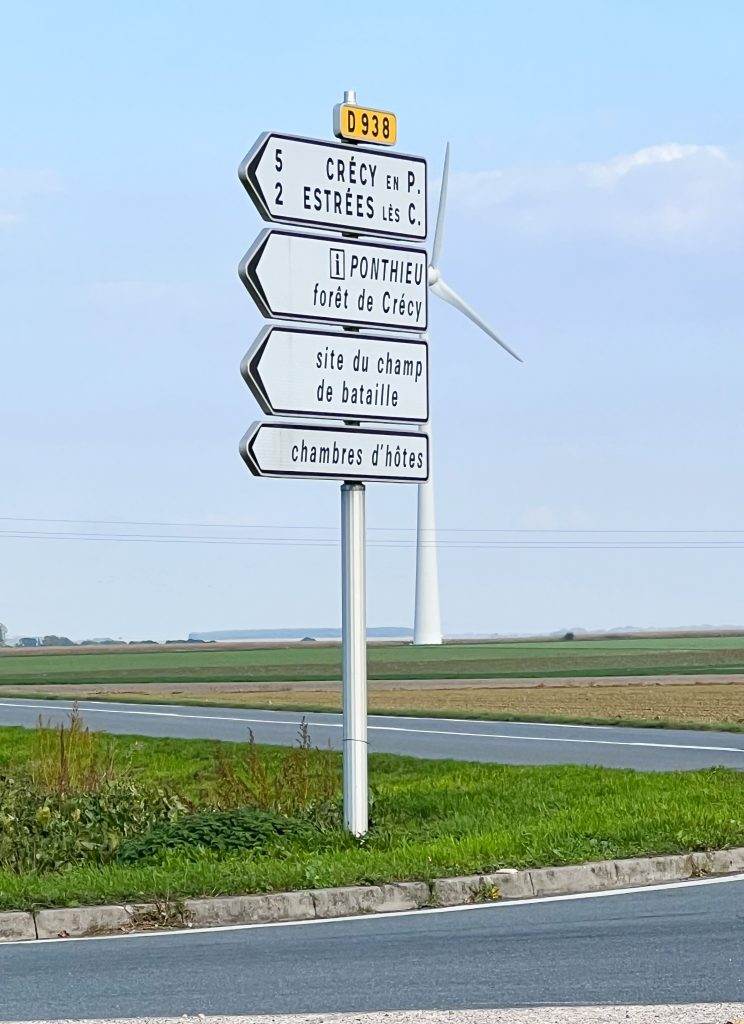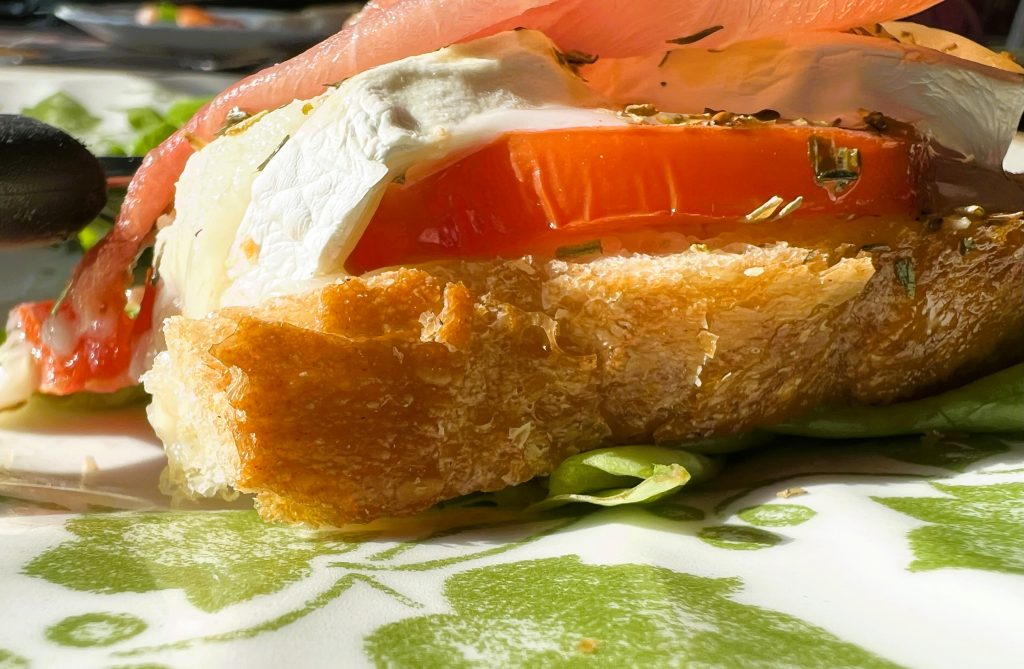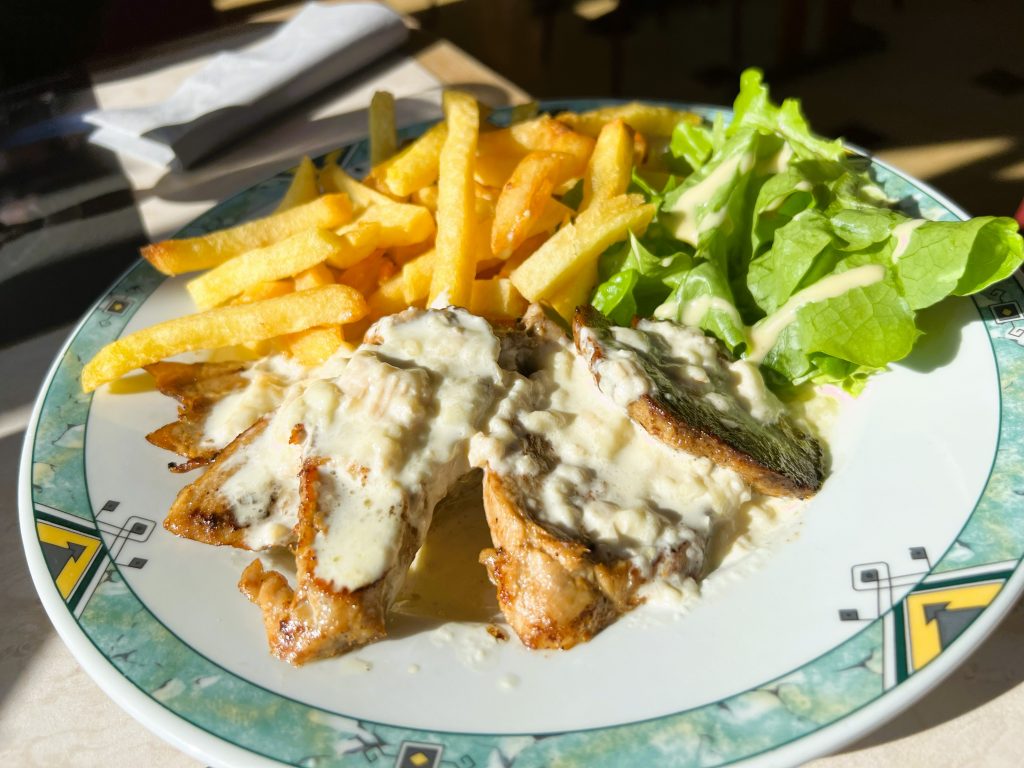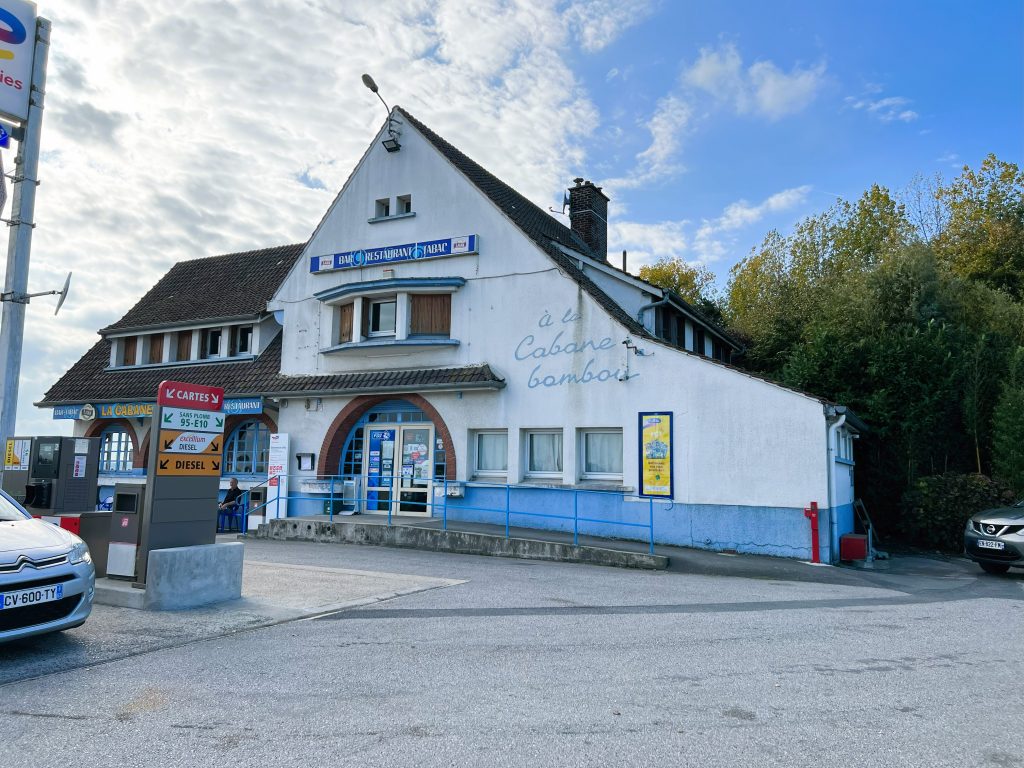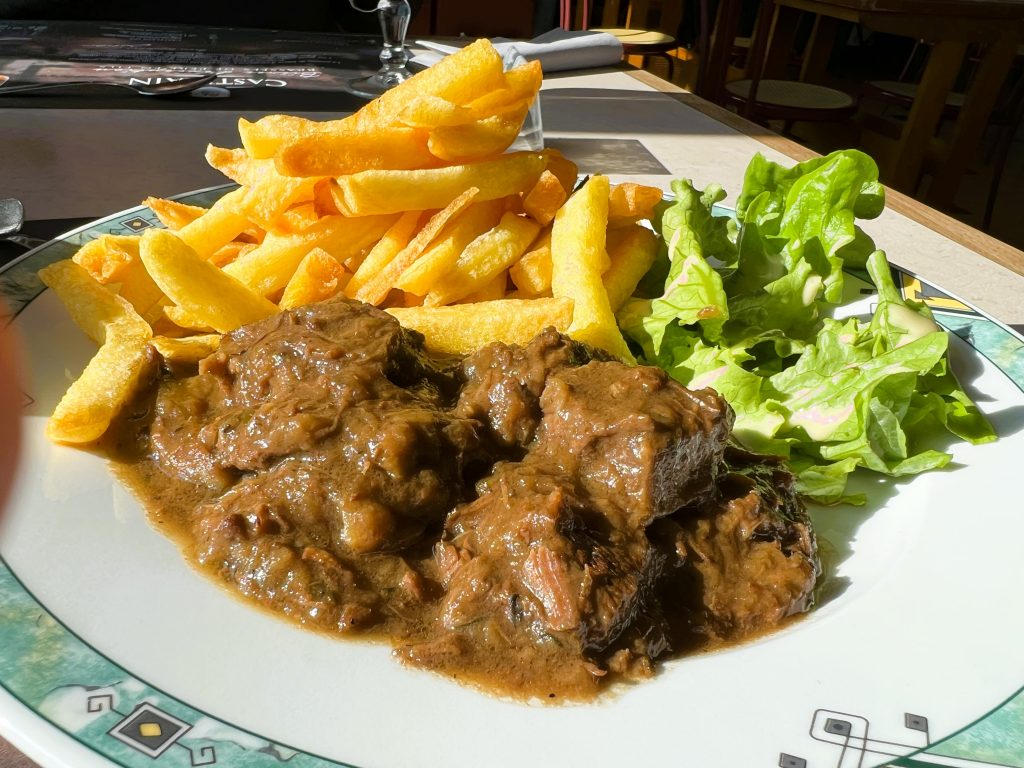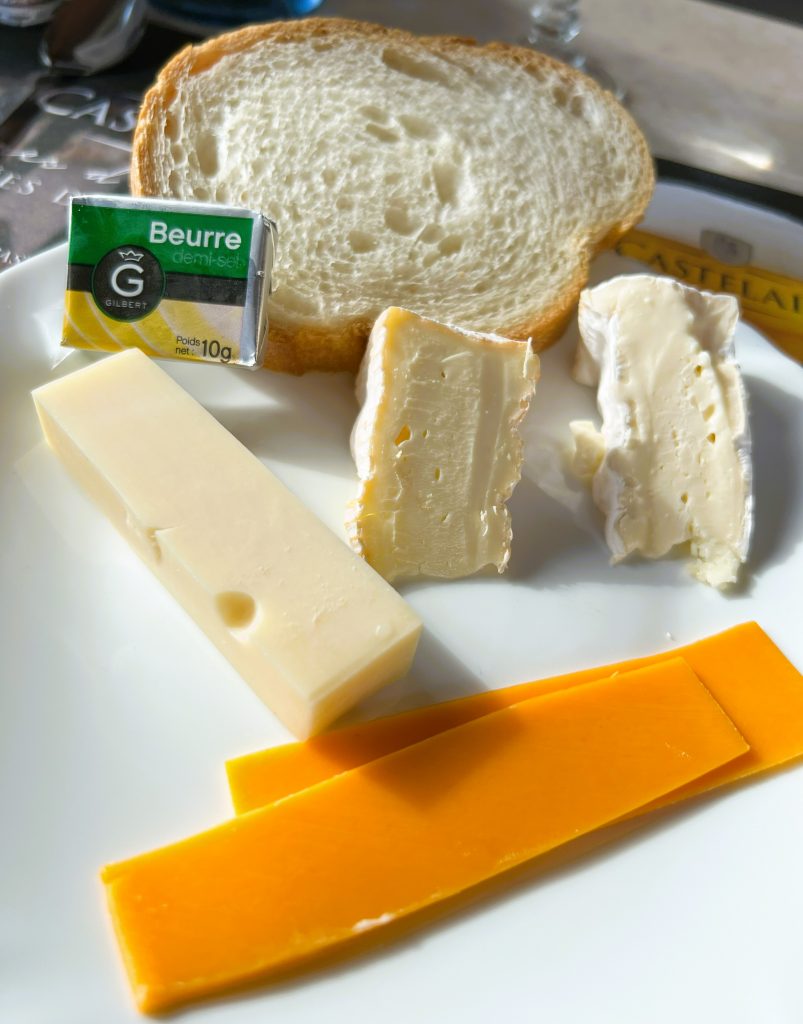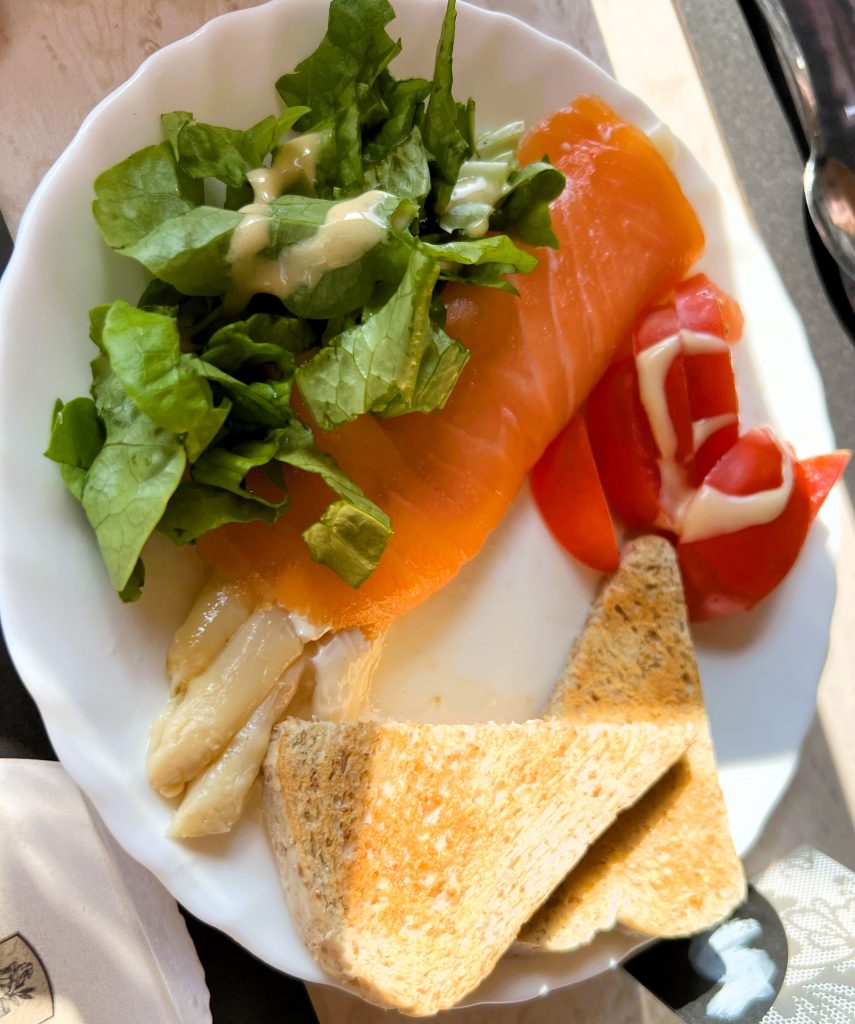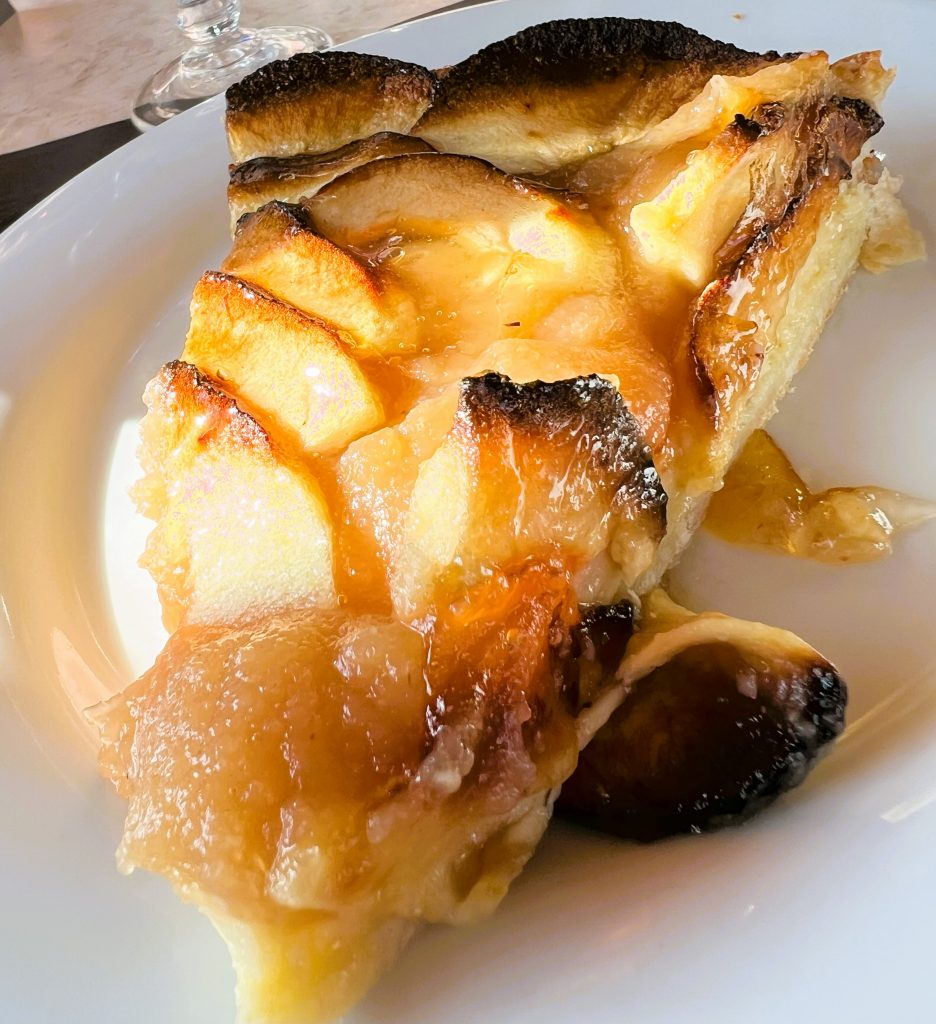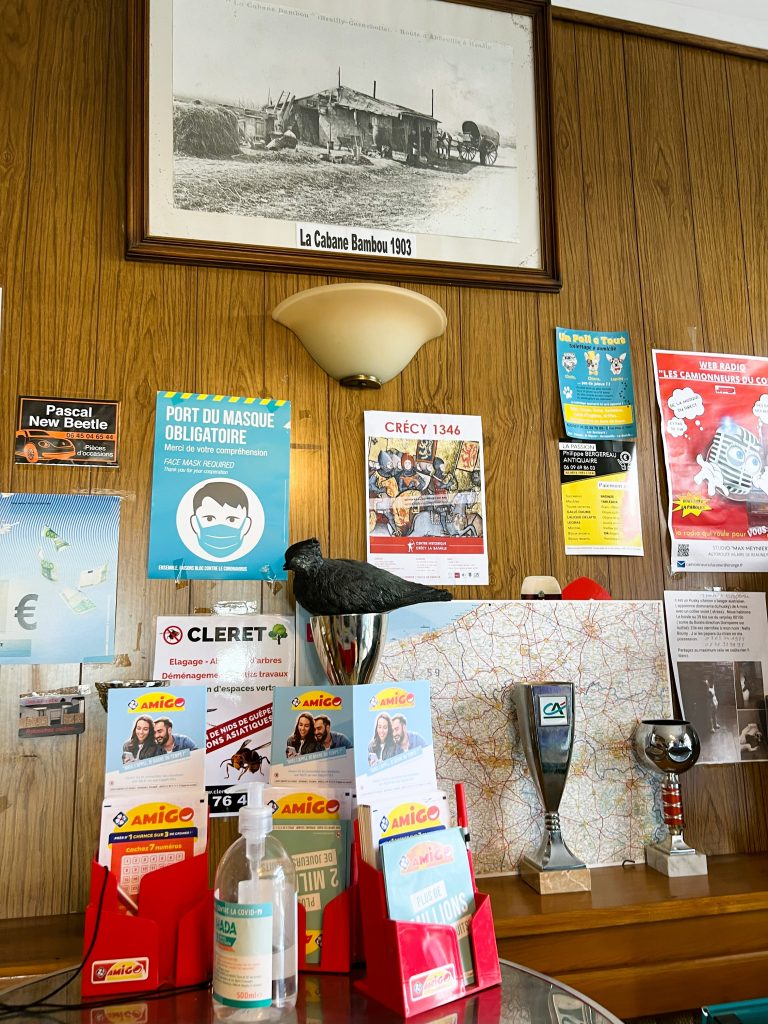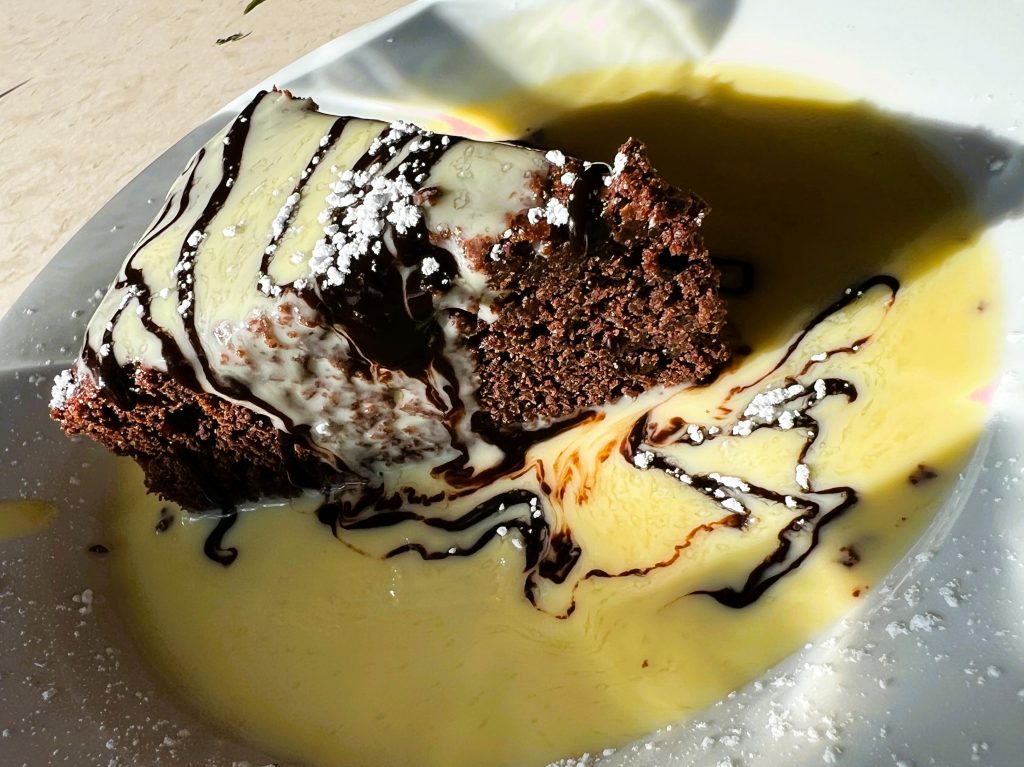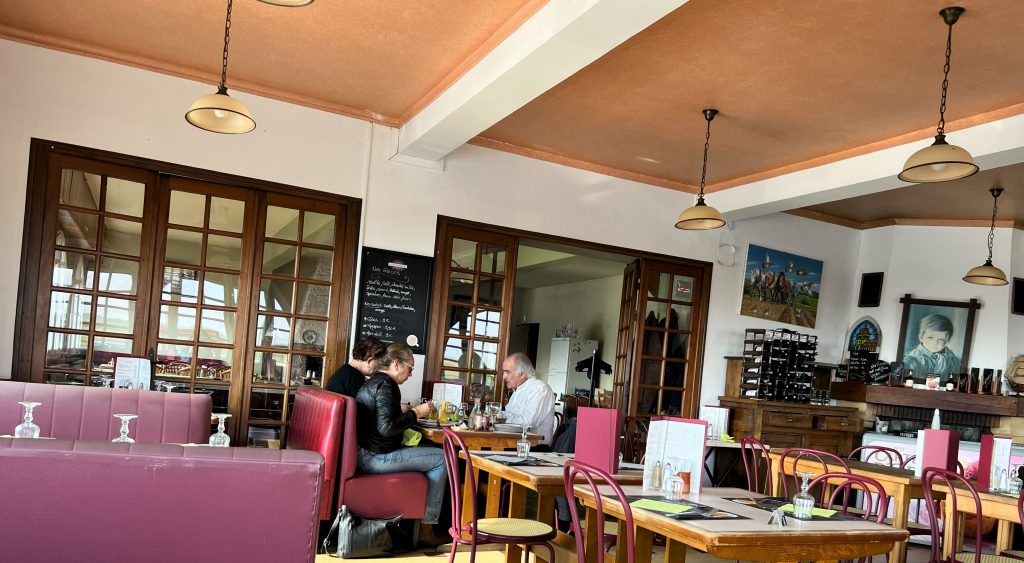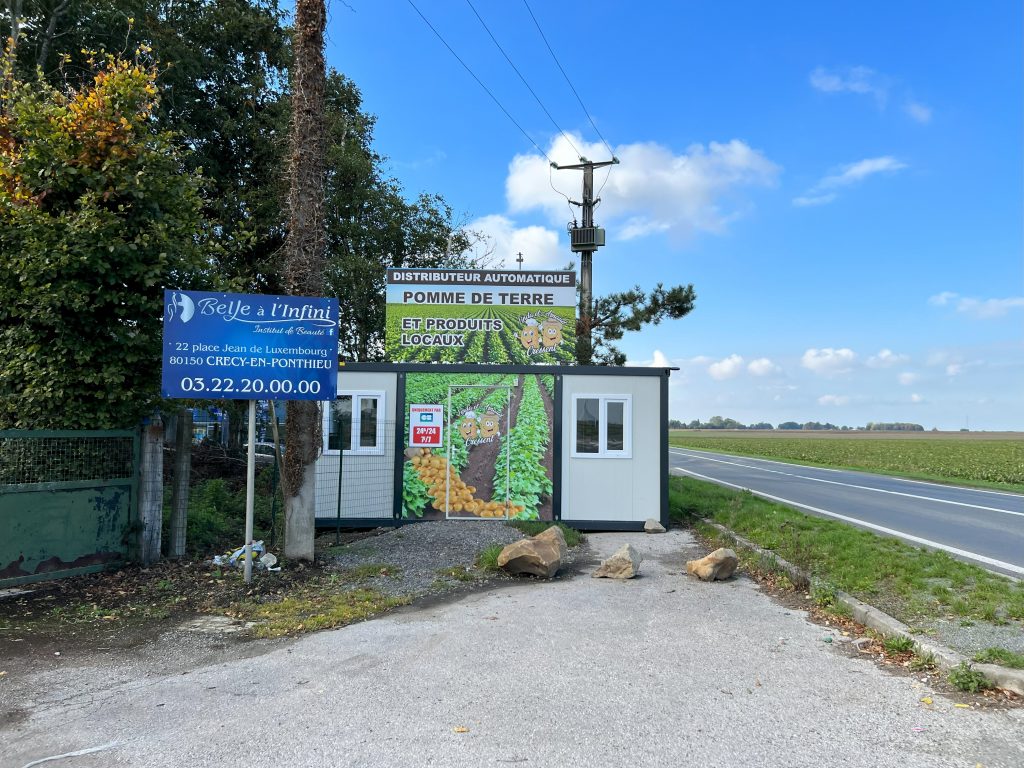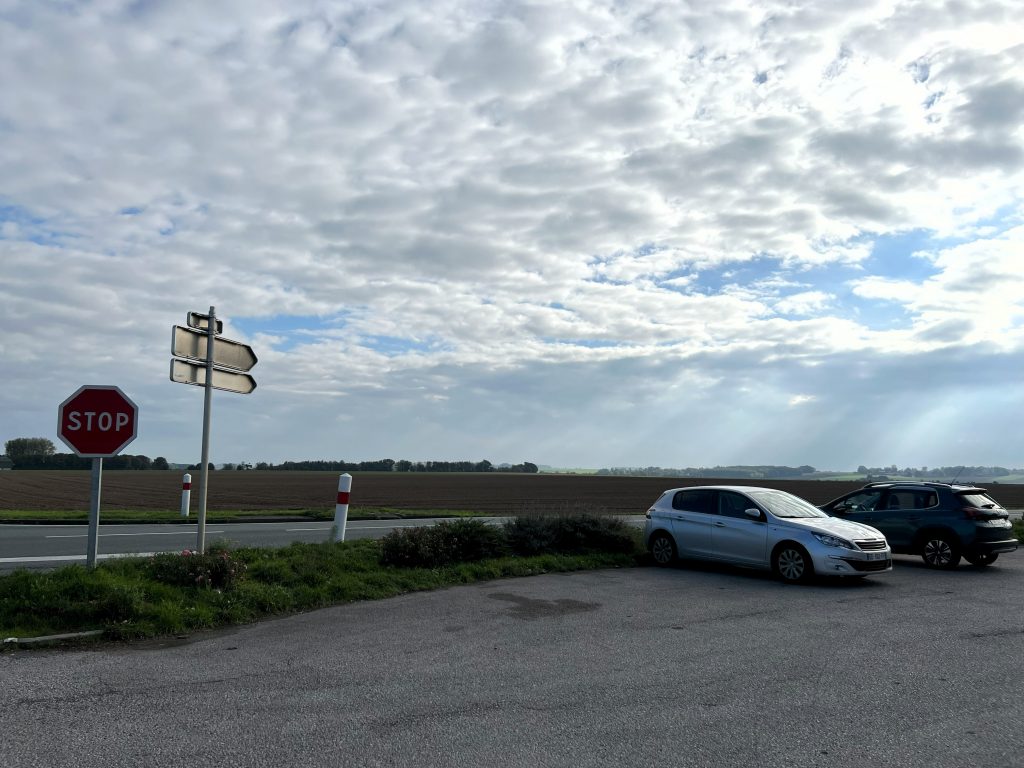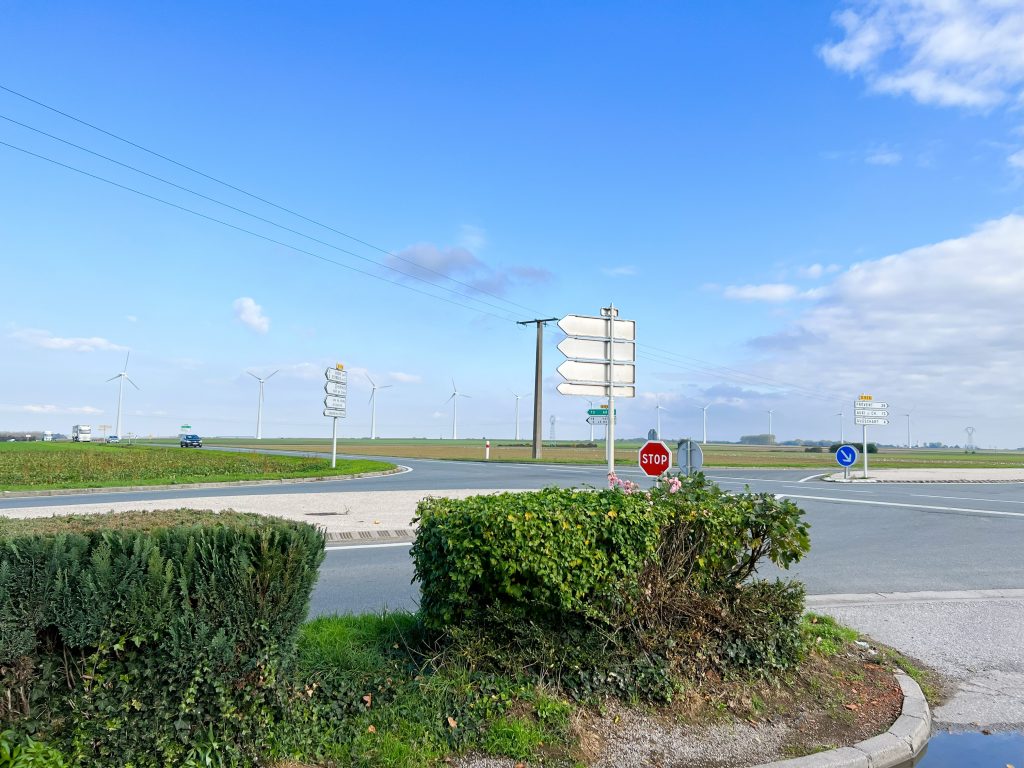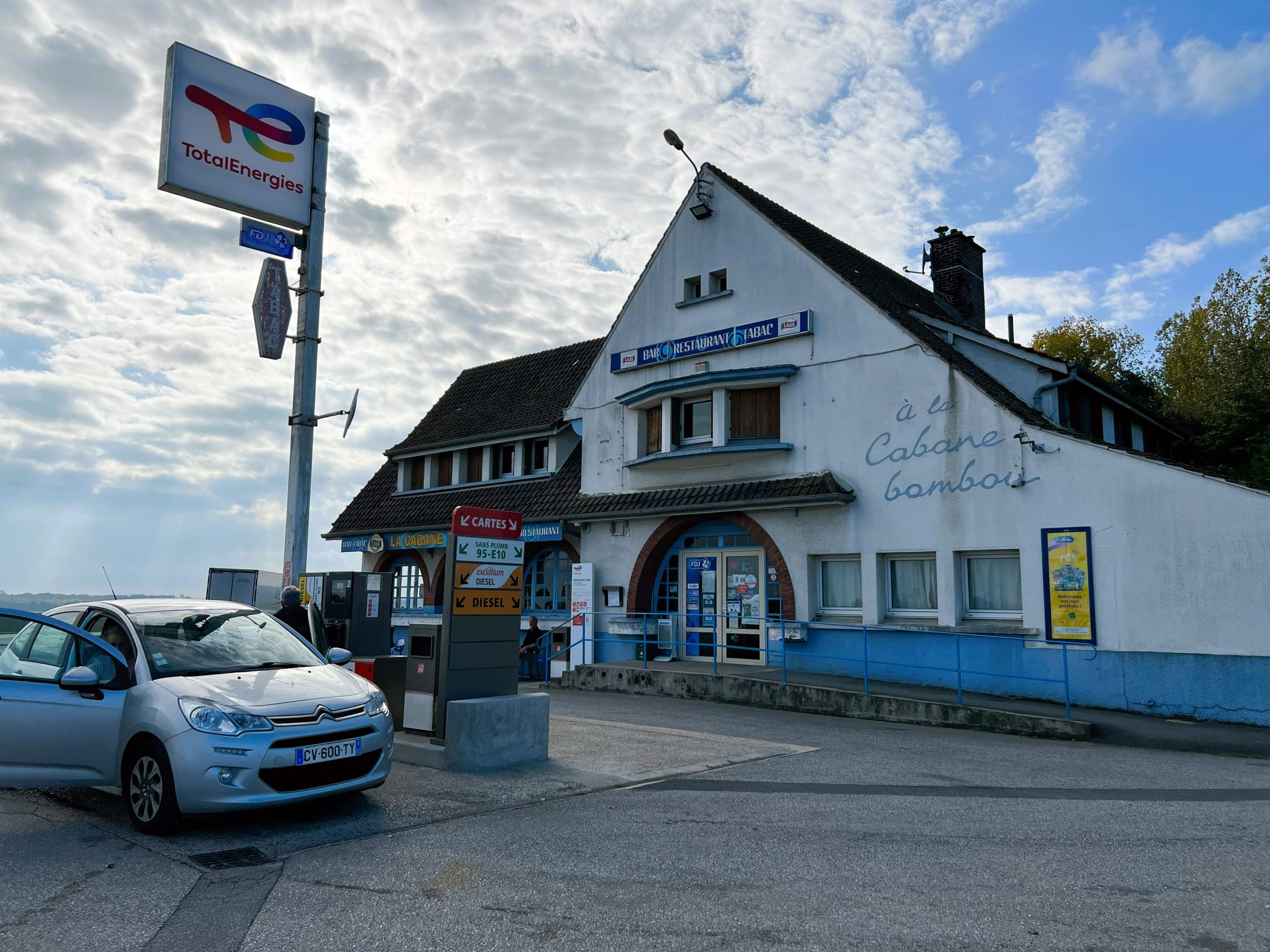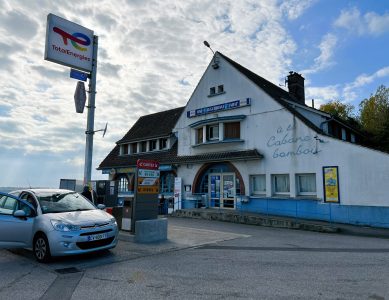In my travels through France, I ate at a lot of different places: bistros, table d’hotes, brasseries, cafes, restaurants, and yes, even a taco stand in Paris. One of the standouts though, was a restaurant of a type I had heard of and had come to write about – Les Routiers. Routiers are what we here in the States would call a roadside diner. However, this is France and a routier is anything but the typical American truckstop diner.
Some of the elements are there. These routiers are on roadsides in rural France where the truck and van drivers carrying crops into the city have their routes. The routiers are usually non-descript buildings with huge parking lots that are filled with cars, vans, trucks, trailers, and even tractors. French families on road trips are budget-savvy and know about les routiers. There is even a guide, much like the Michelin Guide but this is specifically for the routiers. The guides exist mainly so that truckers know of places on their routes where they can rest, fill up with petrol, have a great meal on a budget, and maybe a drink or two. The most important and up-to-date guide is called Relais Routiers (basically, the French trucker network). Sometimes truckers are asleep in their vehicles in the parking lot, just as with American truck stops. It is the food that sets les routiers apart from their American counterpart. Fun fact: the truck drivers are also known as routiers. The routiers in these rural locations also serve as a form of community. They can be watering-hole, informal town hall, the place where farmers can buy lottery tickets, and cigarettes, or have a glass or beer or wine. The routier acts as a kind of social club for the rural communities they serve.
A routier will typically serve regional, hyper-local, and seasonal fare. There is usually one menu, written on a wall and you can pick and choose from what is offered. When it runs out, you are out of luck. There are often several courses because this is France and a routier is considered a restaurant. Here in America, were use the word “restaurant” interchangeable to mean anything from a McDonalds to a three-star Michelin dining experience but in France, it has a specific meaning. The proprietors of these rural dining spots know their clientele expect good, hearty, well-cooked food on a budget. These are French truckers after all and are more than willing to drive out of their way if the Relais Routiers tells them a particular place has a great menu, service, and price.
I visited La Cabane Bambou, a routier in Brailly-Cornehotte on my way to Crecy. The routier is located on the crossroads between Hesdin-Abbeville and Crécy-Auxi le Château, so it was a perfect place to stop and get lunch before heading out on a day trip through Crecy forest. The parking lot was full of trailers, some family cars, and plenty of white trucks and vans. I walked into a comfortable place with a bar in the front that served quite a few French and Belgian beers, wine, cigarettes and lottery tickets. The menu was handwritten on a piece of paper entitled Menu a 17 E that hung on the wall. The menu was divided by courses with four or five selections on each course. La Caban Bambou offered four courses at 17 euros a person. Yep, you heard that right, 17 euros for a four-course meal, including coffee and water. Wine, beer, or soft drinks were extra. The menu did offer cook-to-order specials and those added a few euros to the menu, but still, it was very reasonable.
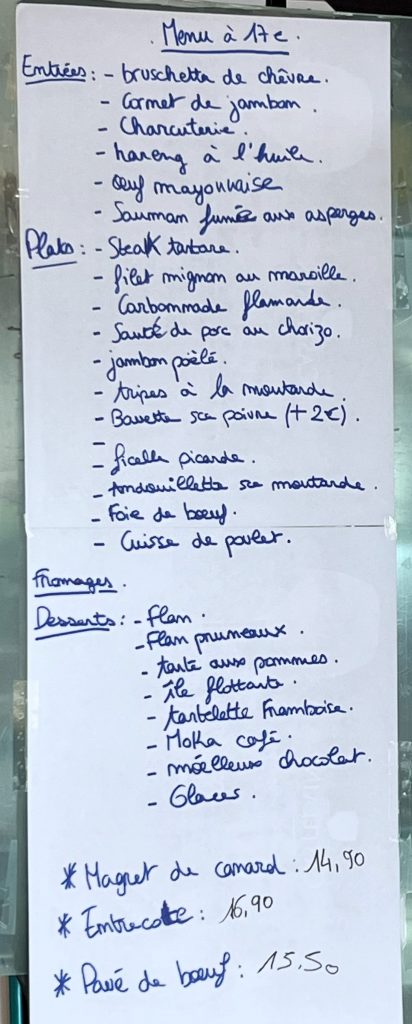
My lunch companion and I selected a table and gave our orders to the waitress who quickly brought us coffee and water. My companion started with samon fumee avec asperges (smoked salmon and white asparagus) while I had bruschetta de chevre (a baguette slice topped with tomato, goat cheese, and ham). For entrees, I chose the carbonnade Flammande, a traditional Flemish beef stew made with beef, caramelized onions, beef broth, and dark local ale and my companion chose the bavette a poivre (Pork flank in peppercorn sauce). There was a cheese course after that with a selection of local cheeses and fresh bread and butter, and for dessert, I had the tarte aux pommes and my companion had the moelleux au chocolat (chocolate cake).
Everything was delicious and fresh. The bruschetta, goat cheese, and tomato were enough to make a meal for me. The cheese was oozy, melty goodness, and paired perfectly with the thin slice of French ham and the acidity of the juicy red tomato. Frankly, I was surprised that there was a tomato so flavorful and juicy in rural Northern France in October. Tomatoes thrive on sunshine and being from California, I tend to be a little biased. While not as rich a red as a California tomato, the slice that topped my bruschetta was surprising in its depth of flavor. Combined with the cheese, ham, and crusty baguette, it was heaven in a bite.
While that appetizer was great, the star of my meal was the carbonnade flamande, which I had heard about but never tasted. The dish originated in Belgium, a near neighbor to Northern France. The recipe, it is told, was invented by workers in the coal mines, who marinated their leftover meat in beer and then grilled it over coal. The name carbonade refers to that grilling over coal. The recipe has been around since at least the eighteenth century. I was excited to try it as I grew up eating one of the recipes of the Mexican silver miners – enchiladas mineras, tacos, and burritos, foods invented by or for miners. There is a wealth of food we have that was created to nourish the hard-working people that worked in often dangerous conditions in mines. I was eager to try the Belgian/Northern French version of miner’s food.
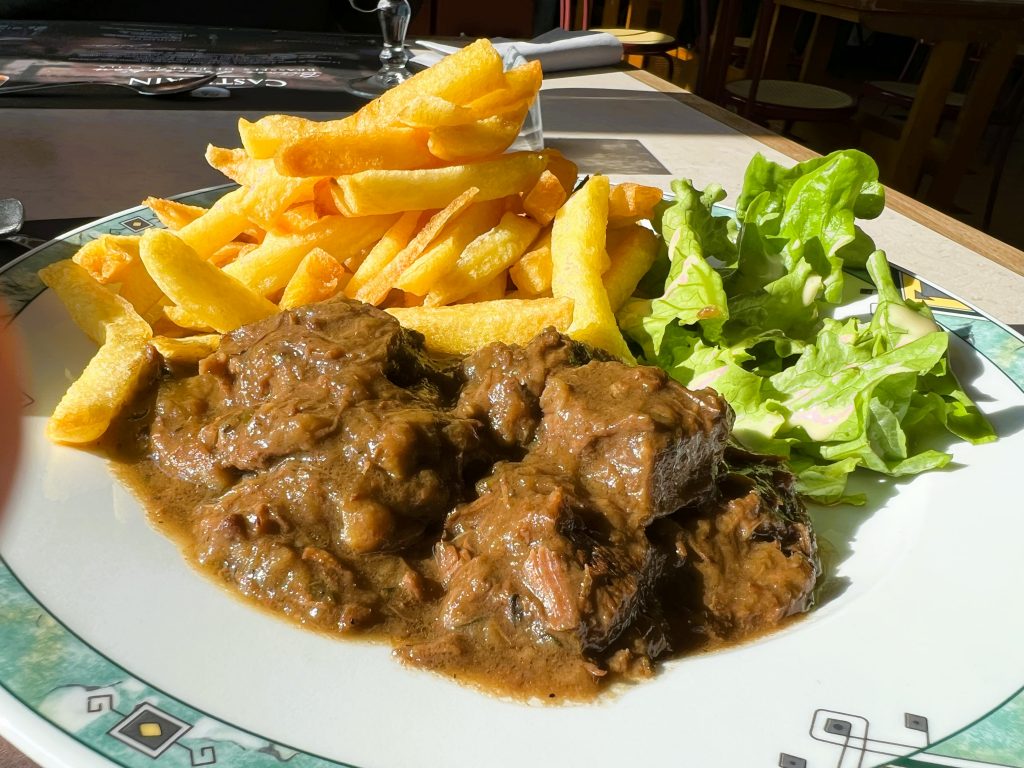
When my plate was brought to the table, the dish emanated the rich aroma of slow-cooked beef. Also on the plate were the ubiquitous pommes frites and a salad made with local greens. The beef was braised to perfection, succulent, and infused with the essence of caramelized onions and herbs. The ale lent a deep, malty undertone to the dish, balancing the sweetness of the onions, and enhancing the savory notes of the beef. The tender meat had absorbed the ale-infused sauce, making each bite a delectable experience. The crispy pommes frites made from hyper-local potatoes (literally the potato field is just across the road) were a perfect accompaniment to the carbonnade flamande. I found myself dipping them into the leftover sauce from the beef, just to soak up the last delicious bit of it. The portion sizes at La Cabane Bambou are hearty and I barely had room for the dessert but I sure didn’t want to miss the tarte aux pommes.
The tarte was just as wonderful as I had hoped and well worth stuffing myself for. The local apples, just in season, were the highlight. I tasted the piquancy and fruitness of the apple, the butter in the pastry, and the faintly smoky taste of the light char on the roasted apples. It was, in a word, glorious and a perfect ending to my first meal in a routier. It won’t be my last. I have plans to go back to France and schedule a road trip around every routier just to write about all the glorious local and seasonal food in the countryside.
